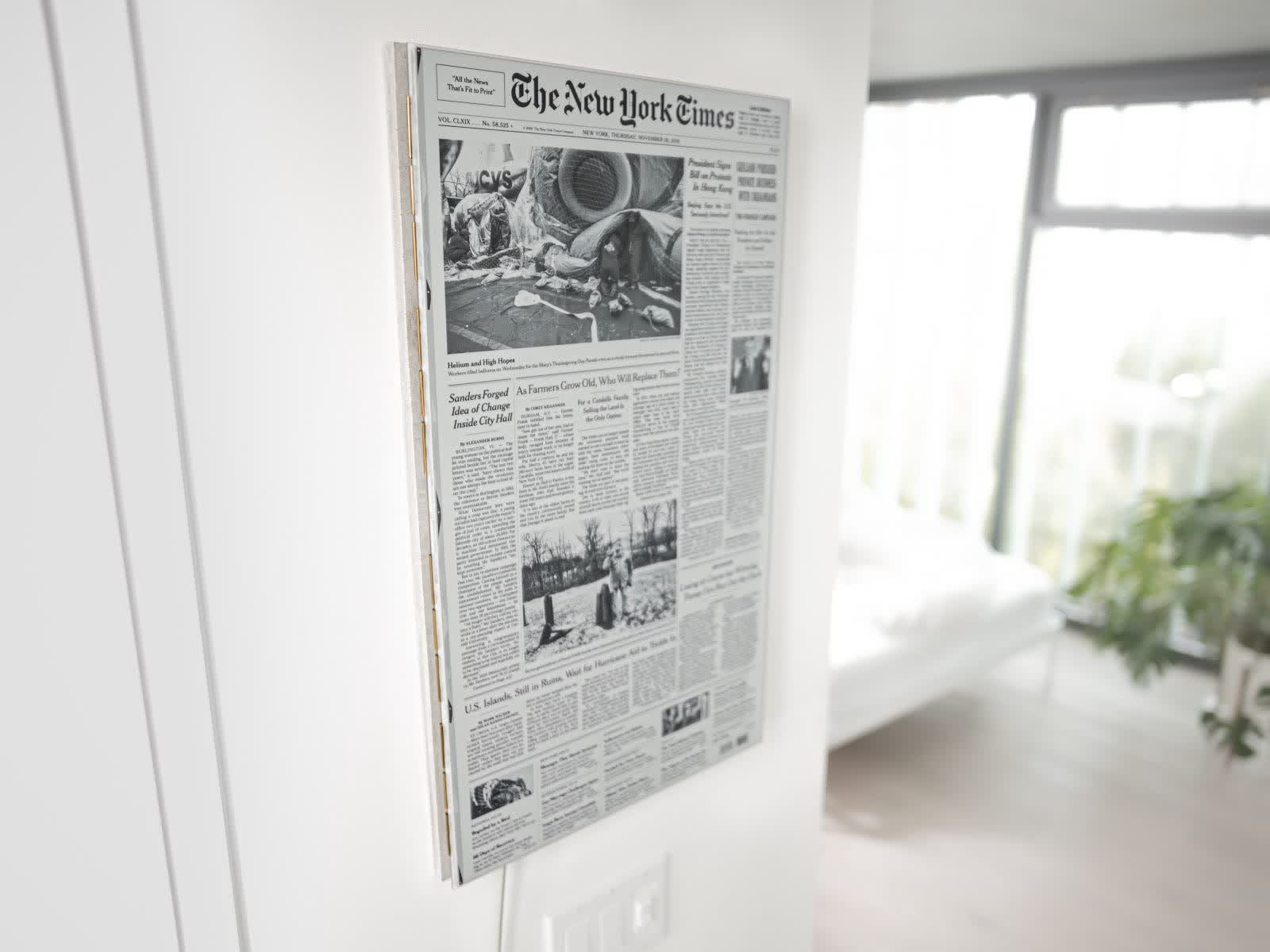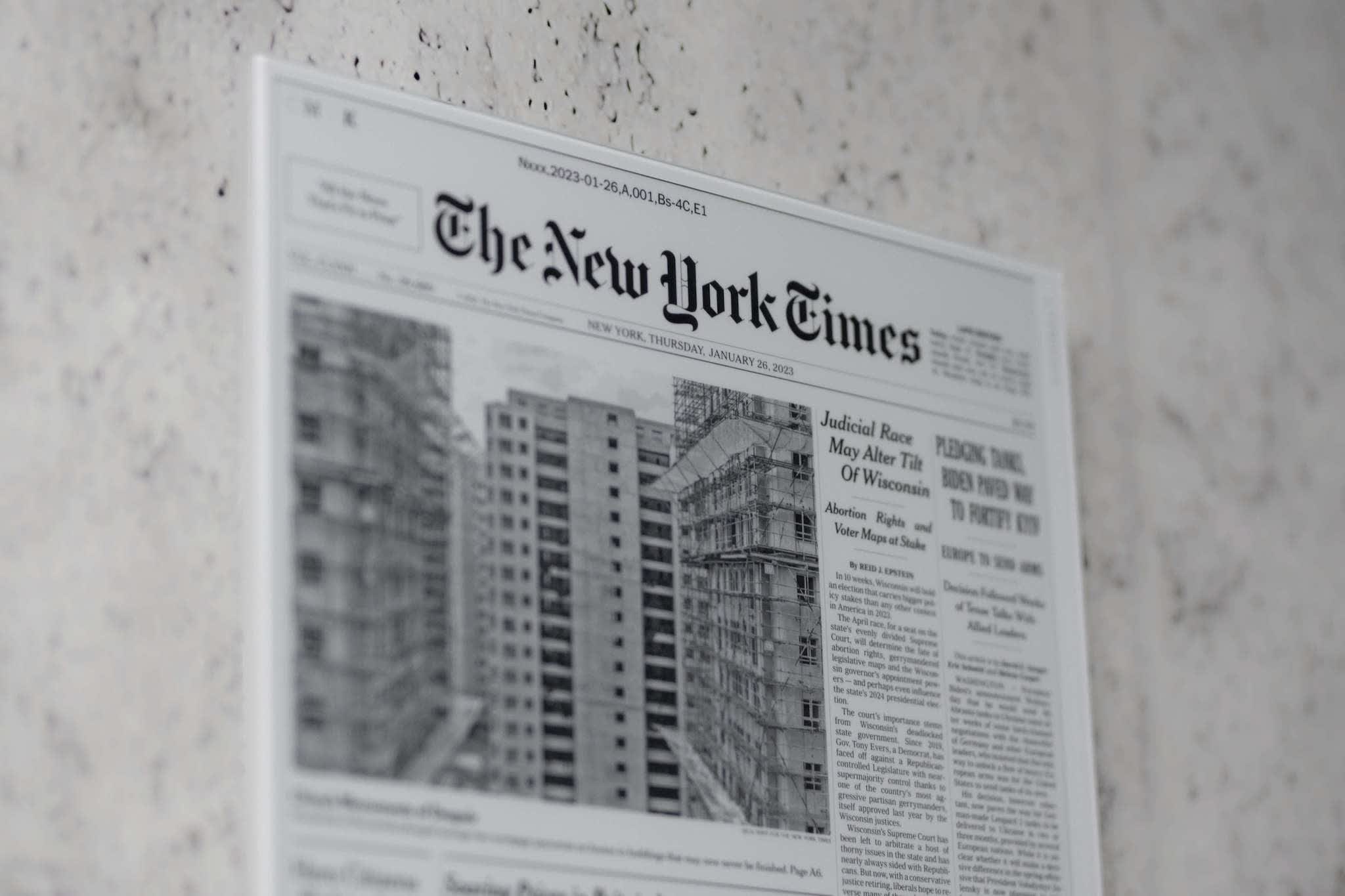Forward-looking: Fans of eBook readers are already familiar with the benefits of e-ink screens, which are easy on the eyes and require very little power when the image they display is static. They're not suitable for some applications, but enthusiasts are using them to build things like beer fermentation monitors, Dungeons & Dragons hit point trackers, portable monitors, digital picture frames, and, more recently, wall-mounted newspapers. There's nothing quite like the front page of your favorite publication being displayed on a large screen while you sip your morning coffee – that is, if you can afford such a privilege.
E-ink displays have been around for years, but most people haven't seen one outside of ebook readers like Amazon's Kindle series or alternatives like the PineNote and the reMarkable, which are niche products designed by smaller companies. Tags on products sold at your local supermarket may also use e-ink displays, owing to their low power usage and excellent readability.
One of the most innovative companies in the so-called electronic paper display market is E Ink, which has an extensive patent portfolio related to the underlying technology. That said, its eye-friendly screens have yet to become a mainstream phenomenon, regardless of how much tech pundits are beating the drum for covering the world in e-ink displays. E Ink says it has sold over 130 million of these to date, but they're nowhere near as common as LCD or OLED displays.
Still, that doesn't stop tech enthusiasts from playing with e-ink displays to create a variety of devices. For instance, self-proclaimed news junkie Alexander Klöpping created an art installation that has turned from a small hobbyist project a few years back into something that is now a product you can buy and install on a wall in your living room.
Klöpping says he was inspired by Max Braun, a Google engineer who, back in 2020, showcased a wall art display installation that would fetch the front page of the New York Times early in the morning, convert it to PDF, and display it on a 31.2-inch monochrome screen so he could read it while sipping on his cup of joe.
Seeking to replicate the result, Klöpping set out to build "Project E Ink" using off-the-shelf hardware, and his work was impressive enough to be shared on Hackernews. The co-founder behind Dutch news aggregator Blendle saw a positive response to the contraption and eventually decided to turn it into a commercial product.
To that end, Klöpping partnered with a Slovenian company called Visionect, which makes digital signage solutions for offices, airports, museums, and hotels. These happened to be the exact size needed – 32-inch diagonally, or 27.84 × 16.29 × 0.53 inches. They weigh in at 18 pounds and feature a VESA mount on the back, which makes them easy to install on a wall using a simple TV mount.
The product itself isn't cheap at €2,783 (~$3,125), but you have to keep in mind that the screen alone costs €2,300. You can customize it using a cloud-based content management system and set things like how often you want the screen to be refreshed with new content or load a different front page if you prefer.
Meanwhile, we have yet to see E Ink's newest color display technology take off in a meaningful way. It's only been available for a year, but we can only hope the only reason it hasn't landed on any new devices is that e-ink displays tend to be expensive and quite hard to manufacture at scale, especially at diagonal sizes like 6 inches and above.

